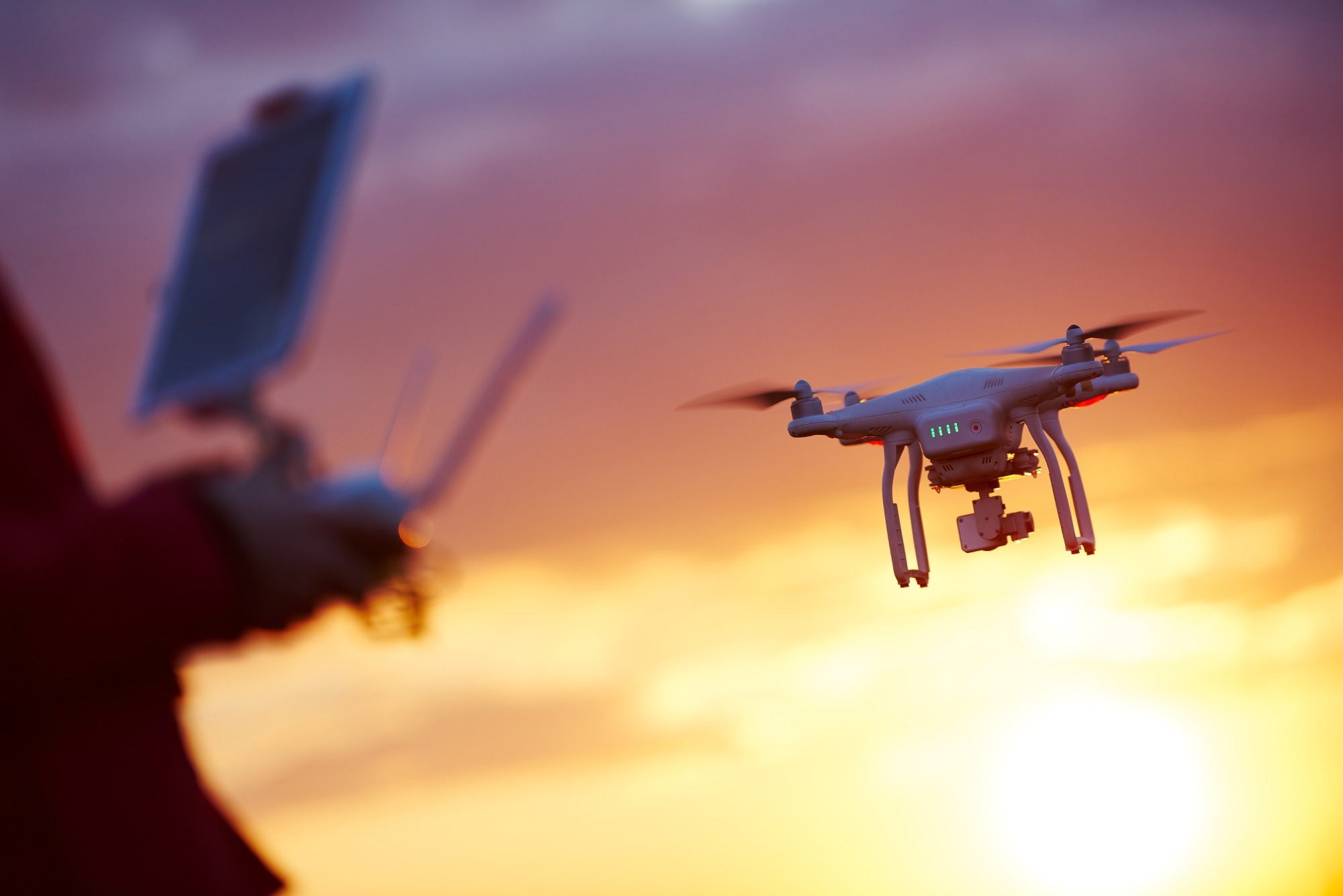
[ad_1]
Automated exterior defibrillators (AEDs) are generally used to revive the heartbeat in cardiac arrest sufferers. These are normally supplied at hospitals and a few public services.
Nevertheless, a brand new examine exhibits that delivering them to the placement of the cardiac arrest sufferer by drone may outpace the transport of the affected person to hospital, restoring cardiac rhythm considerably sooner.
The examine, which was carried out in Sweden, was printed in The Lancet. Cardiac arrest out of hospital happens fairly generally and results in the sufferer’s dying in 9 of ten instances. The instant remedy includes cardiopulmonary resuscitation (CPR) and defibrillation with an AED inside 3-5 minutes.
 Examine: Drone supply of automated exterior defibrillators in contrast with ambulance arrival in real-life suspected out-of-hospital cardiac arrests: a potential observational examine in Sweden. Picture Credit score: Dmitry Kalinovsky/Shutterstock.com
Examine: Drone supply of automated exterior defibrillators in contrast with ambulance arrival in real-life suspected out-of-hospital cardiac arrests: a potential observational examine in Sweden. Picture Credit score: Dmitry Kalinovsky/Shutterstock.com
Background
If given by anyone on the scene, with out ready for emergency medical providers, as much as 70% of the sufferers would survive, or at the least half.
About 70% of out-of-hospital cardiac arrests happen at lengthy distances from the AEDs, which bystanders not often use. Ambulance arrival and defibrillation are each occurring later than earlier than.
The drones geared up with AEDs have been stored on discover at two places with managed airspace. These places lined about 200,000 folks. All requires cardiac arrests in non-hospitalized sufferers resulted within the simultaneous sending out of normal emergency medical providers and drones, which flew autonomously.
Circumstances excluded from this potential examine included youngsters beneath the age of eight years, trauma, and instances the place emergency medical providers have been on the scene. Unfavorable flying circumstances or lack of flight approval by the air visitors controller, in addition to places in no-delivery areas, excluded using drones as properly.
The information on drone flight and outcomes got here from a number of sources, starting from the dispatchers on the dispatch facilities, organizations operating ambulances, drone operators, and the Swedish Registry for Cardiopulmonary Resuscitation. The examine occurred between April 21, 2021 and Could 31, 2022.
What did the examine present?
The researchers recognized 211 suspected instances the place cardiac arrest occurred out of the hospital. Drones have been mobilized for simply over a 3rd of them.
Over 80% of drone flights delivered the AED efficiently to 58 places, although of those, two sufferers had already died, and one was handled by emergency medical providers who have been on the scene. The primary trigger for non-delivery was that the dispatcher was notified that the case was not one in all cardiac arrest.
In all 55 instances, drone arrival and ambulance arrival have been recorded. The drone-borne AED reached the affected person 3 minutes earlier than the ambulance in 37/55 instances, that’s, in two out of three instances.
Of the 55 sufferers, half (n=18) have been really in cardiac arrest. The AED delivered by the drone was utilized in six instances (one-third of the sufferers). In two sufferers, cardiac rhythm was restored earlier than the ambulance arrived. One in all these lived past a month from the incident.
The AED was delivered inside a variety of 15 m from the affected person or location in additional than 90% of the whole and inside 30 m in all instances. No cardiac opposed results of significance have been reported. The AEDs have been intact all through the flight.
The median flight distance for the drone was 1.8 km, although the ambulances drove a median of 4.6 km to succeed in the identical places. The additional time gained is essential as survival odds fall by 7-10% with every minute that goes by with out remedy.
Even so, the median time from name to AED supply was over seven minutes, which have to be lowered significantly to inside three to 5 minutes.
What are the implications?
The AED-carrying drones reached instances of suspected cardiac arrest, delivering the units to the sufferers in 67% of the sufferers. The profit to the affected person’s time to remedy was obvious, saving time by a median of over three minutes. This allowed bystanders to deal with the affected person with the AED earlier than the ambulance may arrive in six sufferers.
That is the primary time {that a} examine has proven the feasibility of delivering AEDs to the place the place there’s a sufferer of out-of-hospital cardiac arrest quicker than an ambulance reaches the spot most often.
Ambulances take longer to reply, with larger variation in response instances, in comparison with drones, that are each quicker and fewer variable. Publicly accessible AEDs are necessary in saving lives after out-of-hospital cardiac arrests, however don’t cowl most places the place this occasion happens.
The truth is, solely 6% to 11% of individuals in numerous industrialized nations usually stay inside 100m of an AED. Nevertheless, that is the utmost distance anticipated for it to assist deal with cardiac arrest.
Thus, drones carrying AEDs may assist many extra folks with out lengthening the time hole to remedy, contemplating that in all instances, the AEDs have been delivered inside 30 m of the sufferer’s location. Volunteers is perhaps recruited to answer the cardiac arrest name to seek out an AED there.
Extra research will probably be essential to measure the cost-effectiveness of this measure on a common foundation, although this measure has already been assessed in a number of nations. AEDs on drones may be simply inspected for performance, whereas as much as a fifth of public AEDs in a single examine from Denmark have been non-functional.
Regardless of some great benefits of AED drones, “we consider that this novel methodology shouldn’t be seen instead, however somewhat as a complement to present ground-based AEDs”.
The best profit is perhaps in residential areas, the extra so since home-based defibrillators haven’t produced an observable profit thus far.
[ad_2]